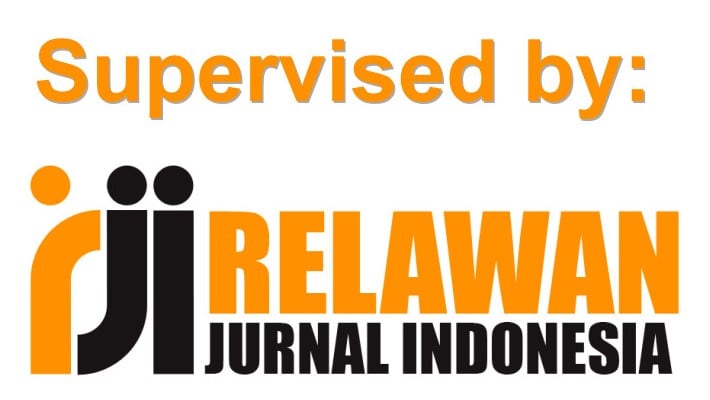Effectiveness of Spiritual Emotional Freedom Technique (SEFT) In Reducing Students' Anger
DOI:
https://doi.org/10.18592/jsi.v10i2.5603Keywords:
Efektifitas, Spiritual Emotional Freedom Technique, Marah, Effectiveness, AngerAbstract
Because of unstable emotions, teenagers have sometimes fallen in a precarious situation, such as violating societal rules and religious norms. Managing emotion therefore is a pivotal aspect to nurture them towards maturity. This study aims to (1) determine the ability of controlling students’ anger; (2) measure effectiveness of the use of Spiritual Emotional Freedom Technique (SEFT) in reducing students’ anger, and (3) describe the applicability of Spiritual Emotional Freedom Technique (SEFT) in student learning. By using the qualitative approach, data collection methods are in-depth interviews, observations, and documentation. The results of this study show that the ability of students in controlling their anger is relatively low, and the applicability of the SEFT in student learning can be done through developing a Learning Implementation Plan (RPP) in supporting their spiritual aspects even though it is only a nurturing effect and not an instructional one because using only the SEFT in reducing students’ angry emotions is considered ineffective.References
Ali, M. (1987). Population Research, Procedures and Strategies. Bandung: Space.
Anwar, Z., & Niagara, S. T. (2011). Spiritual Emotional Freedom Technique (SEFT) Therapy Model for Overcoming Specific Phobia Disorders. Unpublished Research Paper, Universitas Muhammadiyah Malang.
Barnadib, I. (1994). Philosophy of Education. Yogyakarta: Andi Offset.
Bradberry, T., & Graeaves, J. (2009). Conquer Your Emotions: The Way of Emotional Quotient for Your Better Life. Yogyakarta: Your Garail.
Charles, C. M., & Mertler, C. A. (2012). Introduction to Educational Research. Boston, MA: Allyn & Bacon.
Creswell, J. W. (2017). Research Design: Qualitative, Quantitative, and Mixed Methods Approaches. Thousand Oaks, CA: Sage.
Djaali. (2013). Psikologi Pendidikan. Jakarta: Bumi Aksara.
Given, B. K. (2007). Brain Based Teaching. (Trans. Lala Herawati). Bandung: Mizan Media Utama.
Goleman, D. (2015). Emotional Intelligence: Why EI Is More Important Than IQ. Jakarta: Gramedia Pustaka.
Gunarsa. (1992). Konseling dan Psikoterapi. Jakarta: BPK Gunung Mulia.
Khodijah, N. (2006). Psikologi Pendidikan. Palembang: Grafika Telindo.
Kusnanto, K. (2016). Spiritual Emotional Freedom Technique (SEFT) on the Quality of Life of Patients with Pulmonary Tuberculosis. Journal of Nursing 4(3), 213-224.
Grinder, R. E. (1993). Adolescence. New York, NY: John Wiley & Sons.
Gross, J. J, & John, O. P. (2003). Individual Differences in Two Emotion Regulation Processes: Implication for Affect, Relationships, and Well Being. Journal of Personality and Social Psychology 85(2), 348-362. doi: 10.1037/0022-3514.85.2.348.
Rubin, A., & Babbie, E. (2003). Research Methods for Social Work. Pacific Grove, CA: Brooks/Cole.
Sarwono, S. W. (2010). Introduction to General Psychology. Jakarta: Raja Grafindo Persada.
Sarwono, S. W. (2002). Adolescent Psychology. Jakarta: Raja Grafindo Persada.
Sentanu, E. (2007). Quantum Ikhlas: Teknologi Aktivasi Kekuatan Ikhlas. Jakarta: Alex Media Komputindo.
Sugiyono. (2005). Understanding Qualitative Research. Bandung: Alphabeta.
Suryanto, B. A. (2017). Mind and Hormone Control Therapy with RCI Method. Yogyakarta: Kana Media.
Uno, H. B. (2008). Theory of Motivation and Its Measurement: Analysis of the Educational Sector. Jakarta: Earth Literacy.
Wijiyanti, F. (2010). Effectiveness of Spiritual Emotional Freedom Technique (SEFT) Therapy on Reducing Pain Intensity in Post-surgery Section Caesaria Patients. Undergraduate Thesis, Universitas Diponegoro Semarang.
Yegidis, B. L., & Weinbach, R. W. (2012). Research Methods for Social Workers. Boston, MA: Allyn & Bacon.
Yunita, E. (2013). Application of Spiritual Emotional Freedom Technique in Group Guidance to Reduce Anxiety of High School Students in Facing the National Examination. Journal of BK UNESA 3(1), 291-297.
Zakiyyah, M. (2013). The Effect of Spiritual Emotional Freedom Technique (SEFT) Therapy on the Management of Dysmenorrhea Pain. Jurnal Sain Med 5(2), 66-71.
Zainuddin, A. F. (2006). Spiritual Emotional Freedom Technique (SEFT). Jakarta: Arga.
Zainuddin, A. F. (2009). SEFT for Healing, Success, Happiness, Greatness. Jakarta: Afzan Publishing.
Zainuddin, A. F. (2013). SEFer Handbook. Jakarta: Suara Hati.
Zulkifli. (2006). Psikologi Perkembangan. Bandung: Rosdakarya.
Downloads
Published
How to Cite
Issue
Section
License
Copyright (c) 2022 Siti Nuroh, Zulkipli Lessy, Muhamad Fajar Bastian

This work is licensed under a Creative Commons Attribution-NonCommercial 4.0 International License.
Authors who publish with this journal agree to the following terms:
- Authors retain copyright and grant the journal right of first publication with the work simultaneously licensed under a Creative Commons Attribution License that allows others to share the work with an acknowledgment of the work's authorship and initial publication in this journal.
- Authors can enter into separate, additional contractual arrangements for the non-exclusive distribution of the journal's published version of the work (e.g., post it to an institutional repository or edit it in a book), with an acknowledgment of its initial publication in this journal.
- Authors are permitted and encouraged to post their work online (e.g., in institutional repositories or on their website) before and during the submission process, as it can lead to productive exchanges, as well as earlier and greater citation of published work (See The Effect of Open Access).





















